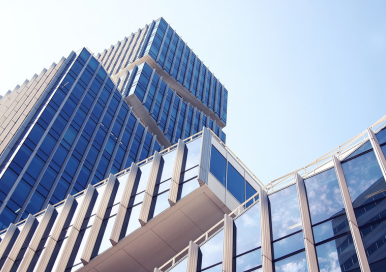Manufacturing Building in CRE: Design, Zoning, and Use

In the world of commercial real estate, manufacturing buildings play a critical role in supporting production, distribution, and economic growth. These specialized facilities are designed to meet the operational needs of manufacturers across industries—from automotive and aerospace to food processing and consumer goods.
Whether you’re a business owner looking to lease space or an investor exploring industrial assets, understanding what defines a manufacturing building is essential. In this guide, we’ll explore the design features, zoning requirements, and primary uses of manufacturing buildings in CRE.
What Is a Manufacturing Building?
A manufacturing building is a type of industrial facility used for the production and assembly of goods. These structures are purpose-built to support operations like fabrication, machining, packaging, and assembly.
While the specific layout and features vary by industry, manufacturing buildings are generally characterized by:
- Large open floor plans to accommodate heavy equipment and production lines
- High ceilings and clear heights for storage, overhead cranes, or mechanical systems
- Robust power infrastructure for machinery and lighting
- Specialized ventilation, plumbing, or waste systems depending on the industry
- On-site loading docks and distribution access for shipping and logistics
Key Design Considerations
The design of a manufacturing building must support operational efficiency, safety, and scalability. Here are some of the most important design elements:
1. Clear Height and Column Spacing
Manufacturing often involves tall equipment, mezzanines, or racking systems. Higher clear heights (typically 18 to 40 feet) allow for greater vertical use of space. Wide column spacing supports flexibility in production layouts and equipment placement.
2. Floor Load Capacity
These buildings require floors capable of supporting heavy machinery and inventory. A standard manufacturing floor might offer a load capacity of 250–500 pounds per square foot or more, depending on the intended use.
3. Ventilation and HVAC
Processes involving chemicals, heat, or fumes demand strong ventilation systems. Some industries—such as food production—also require temperature-controlled environments or clean rooms.
4. Utility and Infrastructure
Manufacturing buildings are typically designed with enhanced utility infrastructure, including:
- Three-phase power
- Compressed air systems
- Wastewater drainage
- Gas lines for heating or equipment
5. Dock Access and Parking
While not distribution centers, manufacturing buildings need efficient logistics. Most include dock-high doors, drive-in bays, and trailer access to support raw material intake and product distribution.
Zoning for Manufacturing Buildings
Zoning laws regulate what types of activities can occur on a property. Manufacturing buildings are generally located in industrial or heavy commercial zones designated by local municipalities.
Here’s what to consider:
1. Zoning Categories
Depending on the city, common zoning designations may include:
- M-1 / Light Industrial: Suitable for small-scale, clean manufacturing operations
- M-2 or M-3 / Heavy Industrial: Permits high-impact operations with noise, waste, or emissions
2. Permitted Uses
Permitted uses may include:
- Fabrication and assembly
- Printing or textile production
- Food processing
- Electronics manufacturing
- Packaging and bottling
Always consult the local zoning code or a commercial real estate expert to confirm that a specific property meets your operational needs.
Common Uses for Manufacturing Buildings in CRE
Manufacturing buildings support a wide variety of industries. Some of the most common include:
- Automotive parts and assembly
- Furniture and cabinetry
- Food and beverage processing
- Pharmaceutical and medical device production
- Plastics and metal fabrication
- Technology hardware and electronics
These properties are also attractive to investors due to long-term leases, tenant specialization, and the critical nature of the operations they support.
Why Manufacturing Buildings Matter in CRE
As supply chain resiliency, nearshoring, and domestic production gain focus, demand for manufacturing buildings is growing across U.S. industrial markets. Businesses need modern, functional facilities that can support evolving technologies, automation, and regulatory compliance.
For landlords and developers, investing in or upgrading manufacturing buildings can mean tapping into a stable tenant base with low turnover and high space customization. For users, finding the right building means increased output, efficiency, and workforce retention.
Looking for a Manufacturing Building?
At IPG, we specialize in sourcing, leasing, and marketing industrial spaces—including manufacturing buildings tailored to your needs. Whether you’re scaling your production, relocating operations, or launching a new facility, we’re here to help.




